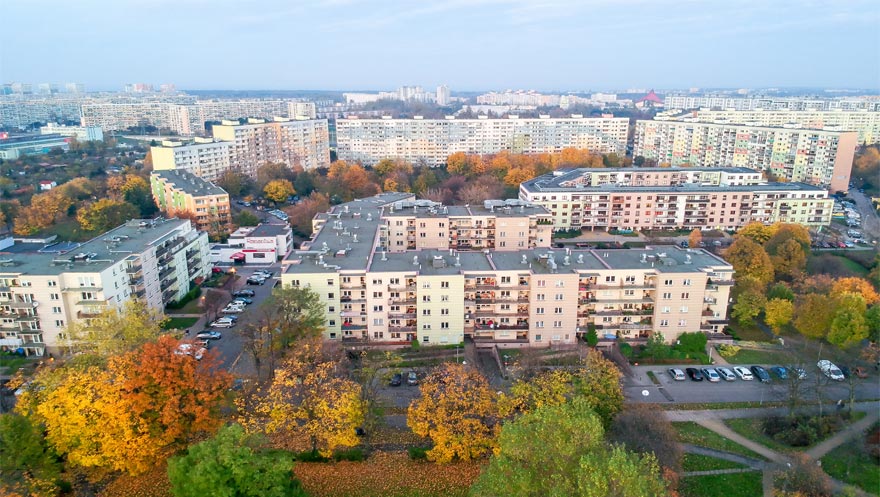When investors think about commercial real estate markets, they’re often drawn to cities like Los Angeles, Atlanta, Boston, New York, San Francisco, D.C., Chicago, and Phoenix.
This attraction to major cities with populations over 5 million is understandable. As long-established centers of commerce and population, they provide large investment opportunities and can seem less risky. For this reason, these cities are considered primary markets, also known as gateway or Tier I markets.
Primary markets get a lot of attention, but they’re not the only place commercial real estate investors should look for opportunity. Secondary and even tertiary markets deserve consideration by the discerning investor.

What are Secondary Markets?
Secondary markets, also called Tier II markets, are midsized real estate markets. They are areas that are less populated than major cities, but more populated than rural areas. Secondary markets are generally not as dense as large cities, but still have all the amenities associated with them.
Some investors consider the secondary population market cap to be around 500,000 – 1 million, but others consider areas with a population of 2-5 million as secondary. Still more define the secondary market based on growth, feeling that areas growing at an above-average rate fall into the category. Other considerations may include economic drivers like investment activity, sales volume, availability of debt, economic strength, occupancy, and market stability.
Some examples of secondary markets in the U.S. include Orlando, Nashville, Austin, Kansas City, St. Louis, Miami, and Portland.

What are Tertiary Markets?
Tertiary markets, or Tier III markets, are small real estate markets. These areas tend to be more spread out with less dense population than primary and secondary markets. Tertiary markets may not have all the amenities and infrastructure residents of large cities enjoy. Most investors would consider an area with a population of less than 1-2 million to be a tertiary market.
Investors may also consider a market’s population and employment growth as an indicator of whether it is primary, secondary or tertiary. Tertiary markets often have great growth rates, but because of their lack of developed infrastructure and development, can make for riskier investments. However, rental rates in these metro areas tend to grow faster than average.
Some examples of tertiary markets in the U.S. include Las Vegas, Nashville, Charleston, and Richmond.

Why Invest in Secondary and Tertiary Markets?
With all eyes on primary markets for pension funds, life insurance companies, and REITs, secondary and tertiary markets provide an opportunity for investors to earn robust returns with reasonable investment capital, all with less of the competitive strain. These markets offer:
- Less competition. Deep-pocketed REITs and real estate private equity funds tend to focus on primary markets, creating a lot of competition. This drives up prices and reduces investment cap rates.
- Better value. Thanks to less competitive pressure, secondary and tertiary markets tend to be more financially accessible than primary markets.
- Higher return. In addition to affordability, the higher investment cap rates can help to produce a higher return.
- Less volatility. During a downturn, secondary and tertiary markets with high growth tend to be less volatile. This makes them a particularly good investment late in an investment cycle.
- Stronger growth potential. Secondary and tertiary markets tend to have a lower cost of living and less real estate supply, increasing the chance of appreciation.
- Value-add opportunities. In primary markets, saturation means there are few properties with the potential for value-add projects. Markets that are still growing often have plenty of opportunities for value-add growth.
- Get in early. For those defining these markets based on growth, getting in before real estate values begin ramping up is a major advantage.
The COVID-19 pandemic in particular has shaken things up when it comes to assessing market tiers. Many areas which weren’t high-growth in 2019 suddenly became exactly that in 2020. People fled major metropolitan areas with high rent such as San Francisco and New York in favor of less dense areas because they could now work from home. The affordability of tertiary and even secondary markets made these areas particularly attractive, creating new opportunities for real estate investors.

How to Invest in Secondary and Tertiary Markets
If you’re interested in investing in these markets, there are some important things to consider. Like any investment, secondary and tertiary markets come with risk, so due diligence is, as always, a priority. Make sure that you look into:
- Rent growth. Promising secondary and tertiary markets tend to have higher year over year rent growth compared to primary markets. Take a look at these numbers to gauge investment opportunity, and don’t forget that regulation plays a role here.
- Job growth. Currently, growth in the tech sector has been particularly promising in these markets. Look for office rent growth in areas with tech expansion or other innovative industries like green energy. More jobs means lower vacancy rates.
- Unique considerations. Every area brings something unique to the table. Compare investment zones to national trends and look at what’s actually driving economy growth.
Ready to start your commercial real estate investment journey in the middle-markets? Earn a passive income investing in commercial real estate, vetted by industry veterans, Pioneer Realty Capital. Join the group of smart investors, and invest in commercial real estate. Commercial real estate investing has outperformed all other investments throughout history.













Get Social